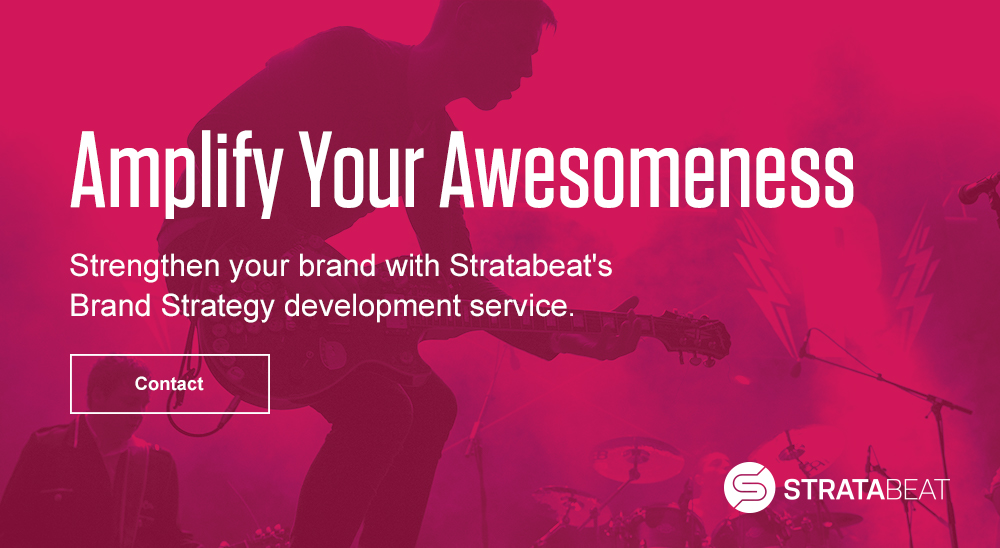6 Elements of a Winning B2B Brand Strategy

Does B2B branding need to be boring? Heck, no!
But then why is it that so many B2B brands today are stuck in an old, outdated mentality, missing what moves the needle in connecting with their audiences?
B2B branding is changing. Competition has never been fiercer. What it takes to win in the B2B landscape today requires an effective brand strategy that cuts through all the noise, separates your brand from the sea of sameness around you, and engages your audience on a deeper level.
To help you build a stronger brand, read on to learn six core elements of a strong B2B brand strategy:
1. Keep It Simple
Business can be complicated. However, winning B2B brands keep it simple. Their message is easy to digest, understand, and remember.
Think IBM, a company developing some of the most complex technology on the planet. IBM was the first to develop a universal quantum computer (complex enough for you?), yet they are masters at keeping their message simple. Think a Smarter Planet. Think Watson. Think Cognitive Business. IBM is continually making the complex simple.
Here at Stratabeat, we similarly strive to keep it simple. What do we do for you? We Amplify Your Awesomeness. We believe that each company possesses something that’s unique, and it’s our job to extract that and amplify it so that it’s powerfully communicated to your audience. Through this amplification, you are able to cut through all the noise, connect more directly, and engage more deeply with those who would value your solutions the most. Are there a variety of services we deploy to get this done, and are there endless details to address along the way? You betcha. But we keep it simple, honing it down to Amplify Your Awesomeness as the core essence of what we do.
2. Clear Positioning & Differentiation
A B2B buyer wants to understand if they are in the right place when encountering a touchpoint with your brand. Let’s say they land on your website, spot your content, or walk in front of your booth at a conference. Are you a solution for startups, SMBs, mid-sized companies, billion-dollar companies, or the Fortune 500? Are you focused on a specific geographical region? Do you serve a specific industry, job role, or title? Are you a premium solution, or the low-cost leader in the market?
The longer it takes a buyer to figure out if they should even be spending time on your brand, the more likely they are to move on. Yet, how often do you run across bland, generic messaging that leaves it up to you to do the heavy lifting?
Similarly, you need to differentiate. Of course, right? However, as startups evolve into viable businesses, others take notice and typically a flood of competition arises from both other startups as well as larger players protecting their turf. The result is often a sea of sameness.
How many times do buyers research a solution, only to find five or six or 10 options without any clear differentiation? It happens all the time. Think about the marketing technology space. Back in 2012 there were approximately 350 martech solutions on the market. Today, there are 5,381, according to the Chief Marketing Technologist Blog. It’s a cluttered landscape, and it’s one in which deciphering differentiation among options is continually becoming more difficult. A winning B2B brand identifies clear differentiation that’s easy to understand.
3. Customer-Centricity
Some B2B brands define themselves by their services. Or how long they’ve been in business. Or how remarkable their technology is.
Instead, it’s critical to think of your brand from the customer’s perspective. What’s the “Why” underlying their purchase decision? What’s in it for them? Why should they care about your brand? How much time does your marketing team spend simply listening to your audience — identifying their main frustrations, what keeps them up at night, their key goals, etc.?
Deloitte has found that customer-centric brands are 60% more profitable than companies not focused on the customer. A Gallup study found that B2B companies reporting high client engagement achieved 50% higher revenue and 34% more profitability than their counterparts.
Gallup pointed out that 71% of B2B buyers are either disengaged or indifferent to their vendors, representing a major threat of defection not because of a weak product or service, but rather because of a lack of customer focus.
Being a customer-centric brand means understanding the customer. It means translating that into meaningful personas and user stories. It means conducting key account reviews. It means empowering the front lines. It means establishing feedback loops so that you are continually learning from your customers. And it means communicating what matters most to them. Get out of the rut of talking about your own company, and instead talk about what matters most to your customers.
4. Data-Driven
Many companies do not include analytics data when developing a brand strategy, yet if you hope to be customer-centric, it’s both highly important and highly effective.
Data can come in many forms, whether on the macro or micro level. For example, you can uncover audience interests and needs on the macro level by studying search, social, and content data. You can also rely on analyst and market research reports, etc.
On the micro level, you can explore your own brand’s search, social, and content data, as well as your own website’s engagement data. How far down the page are they scrolling? Where is their attention on the page? What are they clicking on? Where is their cursor moving? How is the behavior different based on their journey to your site?
A key to relying on data to inform your brand strategy is to continually test and test and test. Through ongoing A/B testing, you can uncover what matters to your audience, and what drives them to action, indicating a deeper-level need. Years ago, Constant Contact used AdWords testing, for example, to identify social proof as being the strongest driver of action among its audience, and this shaped the brand’s identity and messaging across all brand touchpoints for years afterwards, leading to explosive growth.
5. Messaging that Stands Out
If your industry is cluttered with competitors, it’s critical that your messaging stands out and cuts through all the noise. Too often, you come across messaging that sounds like a dictionary or encyclopedia.
In looking for CRM software options, a buyer would find the following messages at the top of various brand’s home pages:
- CRM software to fit your business
- All-In-One Sales Platform
- [ABC Brand] CRM Is Ready. Are you?
- Complete CRM Software for One Simple Price
- Get the CRM with a 360° Customer View
- Get a 360° View From Your Online CRM
- Simple, Powerful, and Affordable
None of these stands out. None grabs your attention. None shouts out at you that the software will transform your customer relationships, and in turn, your company’s future. Not even one of these messages is memorable.
Consider that your buyer’s brain is wandering approximately 30% of the time on average, and up to 70% on occasion, and the importance of having a message that really grabs the audience’s attention becomes even clearer. The human brain wanders as its natural state of rest. Your brand is battling against nature. These forces are guiding the human brain away from your message.
If you want more of your target audience to notice you and spend time with your brand, write stronger, bolder, more compelling messaging.
6. Evoke an Emotional Response
Building emotional connections with your audience is one of the most powerful things your business can do for your brand. Why do buyers decide to go with a higher-priced solution when many other lower-cost options are available? It’s typically because at some point in the purchase cycle, the buyer emotionally connected with the brand. (They most assuredly then rationalized the decision after being persuaded emotionally. The emotional decision comes first.)
The neuroscientist Antonio Damasio found that individuals with damage to the part of the brain that triggers emotions (these individuals could not feel any emotion) had an extremely difficult time making any decisions, including purchase decisions. In other words, if your brand is not evoking an emotional response in your prospects, you’re making it mentally difficult for them to engage with and purchase from you.
Google and CEB found that B2B buyers are almost 50% more likely to make a purchase and 8X more likely to pay a premium when emotionally engaged. Furthermore, they found that purchase intent dips in the B2B purchase funnel when emotional messaging wanes. B2B purchases differ from B2C, though. A McKinsey study found that the main driver of B2B purchases specifically is risk reduction (45% weighting in the decision), which makes sense when you consider that a purchase of $10,000 or $100,000 is going to carry more risk than an individual consumer’s $10 or $100 purchase.
Get emotional to get more sales.

